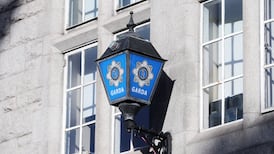Historical weather records tell us that the winter of 1912 and 1913 was fairly dull and wet, at least on these islands.
Carl Stearns Clancy, the Irish-American who became the first man to ride a motorcycle around the world, experienced just such weather in Co Antrim as he and his then biking partner, Walter Randell Storey, rode along the coast road through squally gusts past the Giant's Causeway. They were two up on Clancy's Henderson 934cc, Storey's machine being stuck in a Dublin repair shop after its unscheduled encounter with a tram on October 23rd when they set off from the Phoenix Park on their epic journey.
"A terrific storm broke upon us in a mountain pass [probably the modern-day A2 Cushendall Road], soaking us to the skin, nearly blowing us over several times, and compelling us to return to the last town we passed, Ballycastle . . .," he reported in a dispatch to The Bicycling World and Motorcycle Review of New York , whose readers he regaled with his adventures as he went.
They sheltered the night in the Antrim Arms Hotel (still going strong) and set off again next morning. Not a lot had changed, weather-wise . . .
“. . . we followed the famous Antrim coast road 65 miles to Belfast,” Clancy wrote, “. . . continually leaning against the gusty wind which drenched us with spray from the sea and always buffeting the sharp, stinging rain in our face.”
By the time they got to Belfast, “I found I had frozen both my ears which have since scabbed out and given me the greatest annoyance.”
But at least they got where they wanted. On or about October 30th, 1912, having spent a fortnight in Ireland and covered 500 miles in six days, Clancy and Storey (whose Henderson Clancy picked up in Dublin and rode back to Belfast) caught the night ferry to Glasgow.
Which is what we – myself, biking writer Geoff Hill and Gary Walker, his partner on the CS Clancy Centenary Ride 1913-2013 – would have done yesterday afternoon, had not the weather beaten us.
Belfast and much of counties Down and Antrim woke on Saturday covered by a blanket of snow – delightful most of the time; a pain in the rear for three bikers.
Gary remained trapped in his home in the hills west of the city. Not even a Land Rover could get in or out, according to Geoff who spent the Saturday morning frantically emailing and phoning various people involved in the re-enactment of Clancy’s achievement 100 years after the event.
But yesterday began the thaw – thank God – though it didn't seem like it for me setting off from Greystones in Wicklow for the trek to Belfast with the temperature reading just one degree above freezing. My fingers may never be the same again.
Geoff and Gary spent much of yesterday busily attaching the panniers, top boxes and corporate sponsorship stickers to their newly delivered BMW 1200 Adventure bikes – fresh into Belfast from an 18-mile queue for the ferry in Cairnryan, Scotland .
A few biker well-wishers had turned up yesterday morning at the Fortwillian roundabout on the M2 in Belfast to see us depart – which we didn’t because of the accumulated delays. But this morning, we’ll finally get started.
In that early winter of 1912 when Clancy and Storey's ferry slipped out of Belfast for Glasgow, Clancy noticed the White Star Line's MS Olympic , sister ship to the Titanic and the Britannic , freshly docked for repairs in the great Harland and Wolff shipyard, its four giant funnels marking the skyline.
Memories of the sinking of the Titanic just six months previously would have been in their minds. In exactly four years' time, the Brittanic would sink in the Aegean with the loss of 30 lives. The Olympic had a full sea career, however, plying the Atlantic and other waters until retirement in 1935. She was a troop carrier in the first World War and was nicknamed Old Reliable by the squaddies.
“Our hearts were indeed heavy to leave Old Erin,” Clancy reported, “whose mists, a little more heavy than usual, seemed also to be weeping at our departure.”
It took Clancy and Storey all night to cross the North Channel and sail up the Clyde to Glasgow . This morning, the Stena Superfast VIII will have the three of us and our bikes in Cairnryan in no time at all.











